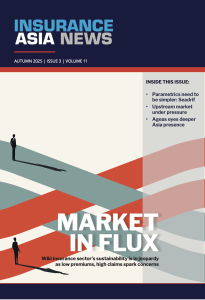2016 EY Asia-Pacific insurance outlook 2016
March 4 2016
Market summary
A time of market transition
Across the diverse Asia-Pacific region, a number of forces are converging to create a pressing need for insurers to innovate throughout their entire value chain:
- Premium growth is slowing, even as new markets open.
- Consumer demands for digital products and services are increasing.
- Competition within, and from outside, the region is growing.
- Regulators are developing more complex rules to protect consumers and reduce market risks.
Over the years, insurance growth has lagged economic expansion, leaving a sizable gap in life protection, especially among the growing middle class market. With economic growth in the region trending slower than in recent decades, and trade activity subdued, the likelihood of a downturn is raising further concerns about the life insurance gap.
Health care reform is on the agenda of several Asia-Pacific countries in 2016, which will help insurers positioned to increase premiums. Penetrating the emerging health care market will require insurers to utilize digital technologies and strategic partnerships to deliver new products and services. For example, several non-life insurers in India have teamed up to create apps to process claims through mobiles or tablets. Similarly, a life insurer is partnering with a start-up company in Singapore to deliver a health care app to employee benefit clients.
Competition continues to heat up as more countries liberalize foreign investment and encourage new business. For example, in China, insurers in larger, developed markets are expanding within and outside the region. More than 50 applications to set up mutual insurance companies in China were awaiting approval from the China Insurance Regulatory Commission (CIRC) in 2015, driven by the government’s national “Internet plus” strategy to stimulate the Chinese economy.
Emerging regulations are disrupting traditional ways of managing business. Mainland China’s C-ROSS is just one illustration of how markets are strengthening their solvency rules, adding costs and potentially upending business models. At the same time, consumer protection concerns remain on the forefront of some regulatory agendas. For example, Hong Kong’s Guidance Note 16, which covers regulatory changes and increased protection to customers, is expected to have a significant impact when it becomes effective on April 1, 2016. The Australian Securities and Investments Commission (ASIC) is providing guidance on robo-advice, as advisory firms and start-ups look to develop new robo-advice models.
Despite these changes, one constant remains: the region’s high vulnerability to natural and man-made catastrophes. Businesses and non-life insurers would be wise to keep this at the forefront of their minds as they rethink their approaches for a fast-changing marketplace.
-
SIRC: Distinct reinsurance solutions are emerging to address emerging capital strategies: Guy Carpenter
- November 4
As insurers improve their understanding of the risks they are carrying and capital productivity, structured reinsurance and alternative sources of reinsurance capital are being increasingly considered, Guy Carpenter’s Justin Ward says.
-
QBE’s Hammond on transformation and growth
- July 2
The Asia chief executive discusses Covid-19, going digital and restructuring.
-
Swiss Re: Nat cats and man-made disasters in 2018
- April 10
Climate change, increased urbanisation and a growing concentration of assets were on the risk agenda for 2018.
-
Willis Towers Watson: 2019 Asia Market Report
- March 19
Economic uncertainty, more complex risks and tighter underwriting are all influencing Asia's markets.
-
Beazley | What does cyber protection look like from day 1 to day 600 and beyond?
Cybersecurity is no longer just an IT concern, but a governance issue that belongs on the boardroom agenda.
-
Sedgwick | Preparing for the next storm
Insurance industry needs to recalibrate, invest in innovation and strengthen systems, talent and data practices.
-
Peak Re | From climate modelling to market opportunity: Forging a new clarity on Southeast Asia’s climate risk
Southeast Asia's protection gap: a crisis of clarity, not just capital
-
BHSI WICare+ | Accelerating Payments, Empowering Recovery
Launched in cooperation with Steadfast’s Singapore network, WICare+ fills the gaps found in traditional coverage and keeps businesses and their workforce secure by covering up to SG$350,000 in medical expenses per claim.

